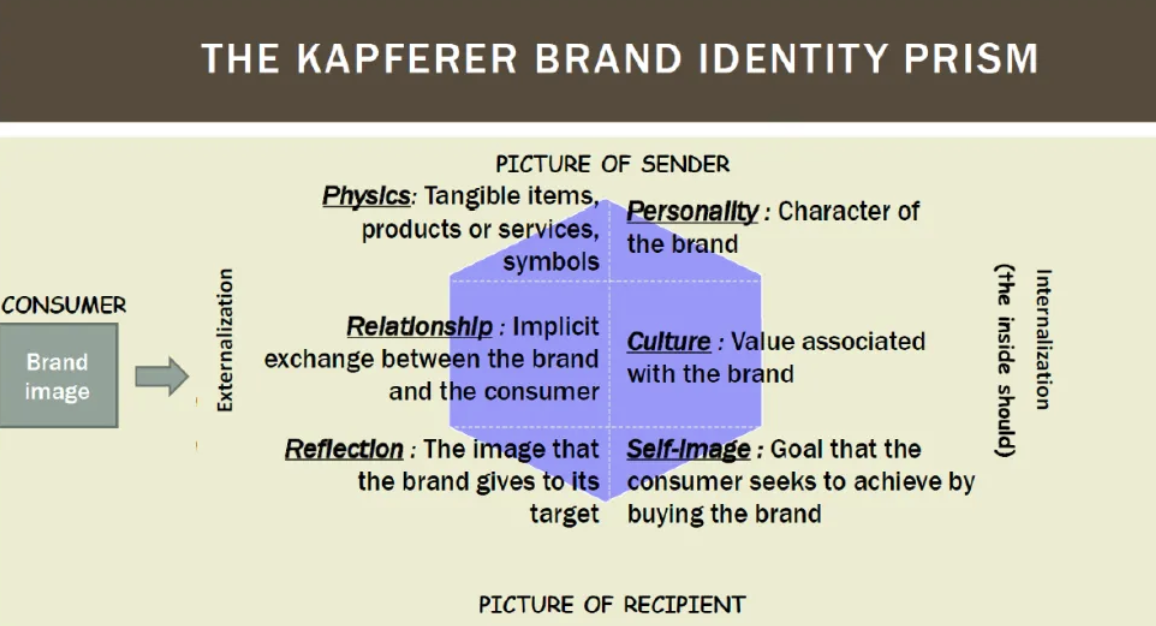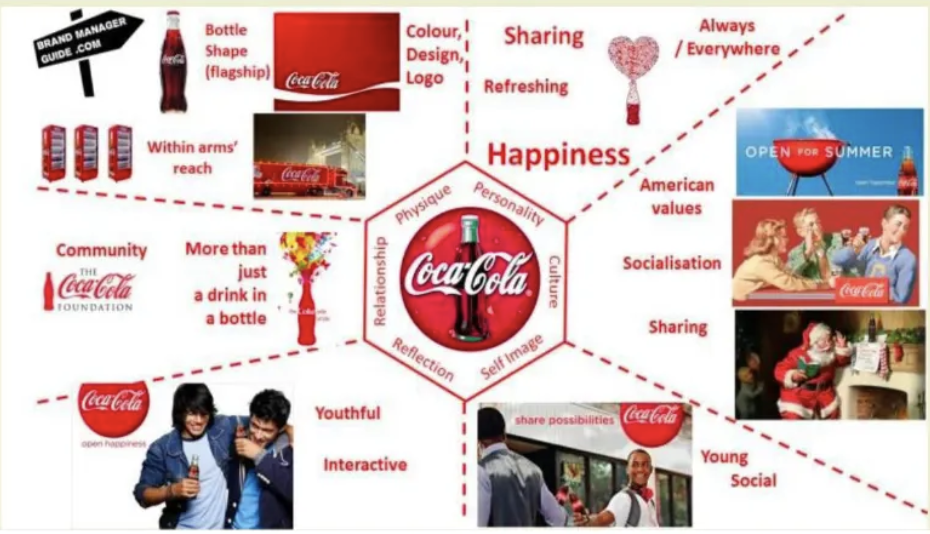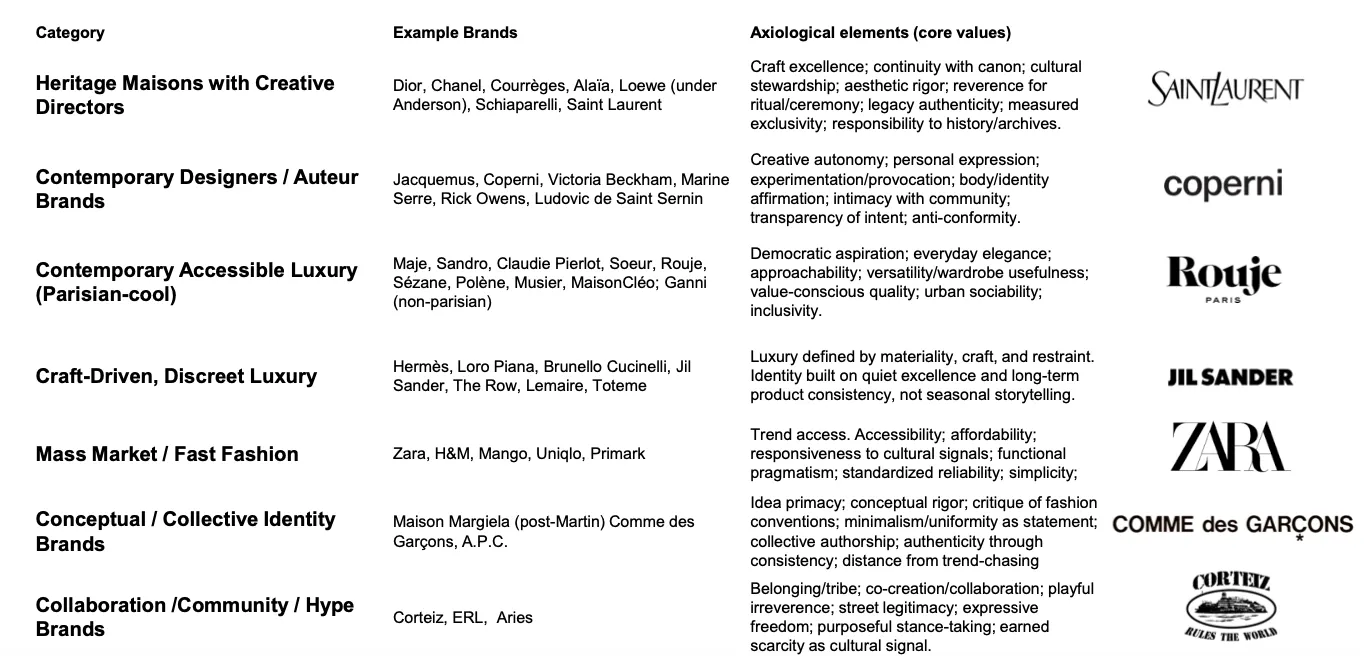branding: axiological level (+ basics)
1/13
There's no tags or description
Looks like no tags are added yet.
Name | Mastery | Learn | Test | Matching | Spaced |
|---|
No study sessions yet.
14 Terms
why do brands exist?
market polarisation: growing divide between low-cost and high-end, shrinking middle market
consumers seek meaning and value in purchases → align with brands that resonate with their identity
brands:
material characteristics (product commercialisation)
immaterial characteristics (storytelling/narratives)
brand’s tangible value/brand valuation
quantifying how much brand contributes to overall value
used in mergers and acquisitions
done by firms that evaluate future earnings and market position
but subjective!
intangible value/brand equity
consumer loyalty, brand awareness, perceived quality, associations
focuses on emotions and behavior
strong brand equity → customer preference, premium pricing, competitive advantage
different ranking methods (ex. unaided awareness)
brand identity: Kapferer


what is a brand?
composition of all discourses around it
by all subjects active in its generations
specificities are based on being a semiotic instance, a way to segment and give meaning in a structure way
semiotic: logo, colors, signs etc
different dimensions of a brand
brand identity = make sense of discourses around brand and rank it
Semprini’s ranking framework:
- codification level (visible)
- narrative level
- axiological level (hidden)
limitations of Kapferer’s prism
brands need consistent identity but fashion thrives on seasonality & coded plays
brand meaning is top-down but fashion brands correlated with audiences & culture
identify facets are prescriptive but fashion subverts norms
who’s in charge of branding?
corporate marketing executives
creative communication agencies
social and cultural life
also designers, creative directors
→ control is atomised, not concentrated
marketing & culture & society
consumer culture theory / what makes fashion brands different?
time
very calendar based industry, fashion weeks
also different business models based on speed of production/distribution
creative directors
product not as central as creative vision
brings symbolic aura
allows brands to form emotional bonds, buying lifestyle/fantasy
“narrative capital” of brands, products turn into symbolic goods
creative vision at different levels
brand level: brand codes, narrative and values
retail level: brand culture, product, customer experience, retail operations
3 dimensions of brand model
codification level (visible)
narrative level
axiological level (hidden)
shows how brand generate meaning
navigating many messages put out by brands
tool to differentiate what is superficial from what builds stability of brand
another version of the model

axiological level
philosophical study of value
understanding deep level of brand meaning through its unshakeable long term core values
root of the brand’s meaning and mission, their ideology/ethics
eg. Saint Laurent:
female empowerment with suit, but can also be sensual
culture and taste through bookstores/sushi restaurant
mission to expand into lifestyle and become tastemakers
eg. Ami Paris:
French culture, Parisian dream, romanticism
idea of simplicity, innocent fun love
core values & brand category are first element of differentiation
fashion categories
heritage maisons (continuity, ritual, legacy, exclusivity, archives)
contemporary designers (personal expression, anti-conformity, community)
accessible luxury (Parisian cool, democratic, versatility, urban, every day, inclusive)
craft driven brands (quiet excellence and consistency, craft, not seasonal storytelling)
mass market (trend access, affordability, responsive to culture, functional)
conceptual brands (critique of conventions/trends, idea primacy, collective authorship)
collab/community/hype brands (tribe, co-creation, expression, scarcity as cultural signal)

financial growth and profit
each campaign and launch is an investment
private equity companies invest in big brands to grow them and then sell their stakes
eg L Catterton in KIKO Milano
performance vs brand marketing
“If rest of operations are not in place, little point in investing in great marketing.”
campaigns can be great but if stock/retail/sales staff/operations aren’t right it doesn’t align
optimise performance marketing to be able to invest in branding marketing
performance: incremental, short term, measurable
brand: long term, brand image